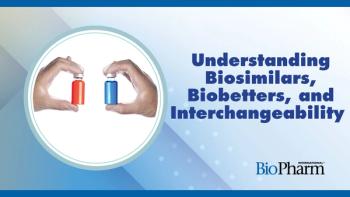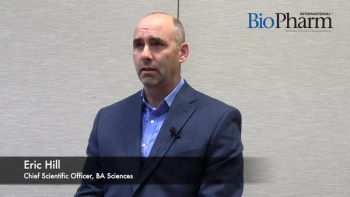
- BioPharm International, November 2022
- Volume 35
- Issue 11
- Pages: 6
Conference Time Brings Gifts
Content is king in publishing, but interpretation is imperator.
Content is king in publishing, but interpretation is imperator. Marie Brown, group vice president at RX (organizers of the INTERPHEX conference) recognized this fact when underlining the new relationship between INTERPHEX and the American Association of Pharmaceutical Scientists (AAPS) saying, “We are excited that AAPS will elevate and expand the content to attract and satisfy the educational needs of research scientists and provide that important link between science and commercialization” (1). The skill to knit together coherent and actionable messages from disparate data inputs is what sets a premium on great interpretation over great content alone. As if to embody this very message, Annette Bak, head of drug delivery at AstraZeneca, modeled a splendid T shirt at the 2022 AAPS PharmSci 360 conference that said a researcher is “an expert at identifying, collecting, generating, interpreting, and analyzing data…”
The point being that while its truly wonderful to see, touch, and admire a vast ocean of sophisticated tools, reagents, instruments, and packaging machinery, it is far better to hear and understand why each advance or twist in engineering makes a sizable difference on next process steps, on required resources (including time), and eventually, and on how all this matters to the biology of a patient.
Context and alternative choice matters. In this edition, we have an article on “Process Development and Control for New Modalities” discussing challenges and choices arising from molecular diversity (see page 10). The lack of platform processes is obvious when considering specific modalities. Process and analytical standardization is a challenge for messenger RNA (mRNA) because of the diverse types of mRNA and different encapsulation technologies, according to experts cited in the article.
The task of relating what is happening is simple and useful. But the utility of hearing what is driving choice, and what alternate strategies are effective, is a value beyond reckoning. This is why conference season is so valuable, and why as much as can be crystalized and distilled into print is the mission of the publisher’s role. As always, we hope you will share what you have learned also.
Reference
1. J. Davis, AAPS Media Advisory, Oct. 19, 2022.
About the author
Chris Spivey is the editorial director of BioPharm International.
Article details
BioPharm International
Vol. 35, No. 11
November 2022
Pages: 6
Citation
When referring to this article, please cite it as C. Spivey, "Conference Time Brings Gifts," BioPharm International 35 (11) 6 (2022).
Articles in this issue
about 3 years ago
Process Development and Control for New Modalitiesabout 3 years ago
Removing Residual Impuritiesabout 3 years ago
Consumers Seek Sustainable Productsabout 3 years ago
Improving the Fate of ADCsabout 3 years ago
Upstream Processing: Biochemicals and Raw Materialsabout 3 years ago
The Role of CoAs in Supplier Oversightabout 3 years ago
Addressing the Key Pitfalls Hindering Technology Transfer Successabout 3 years ago
The State of Contamination Controlabout 3 years ago
FDA User Fees Reauthorizedabout 3 years ago
Principles of Equipment QualificationNewsletter
Stay at the forefront of biopharmaceutical innovation—subscribe to BioPharm International for expert insights on drug development, manufacturing, compliance, and more.




